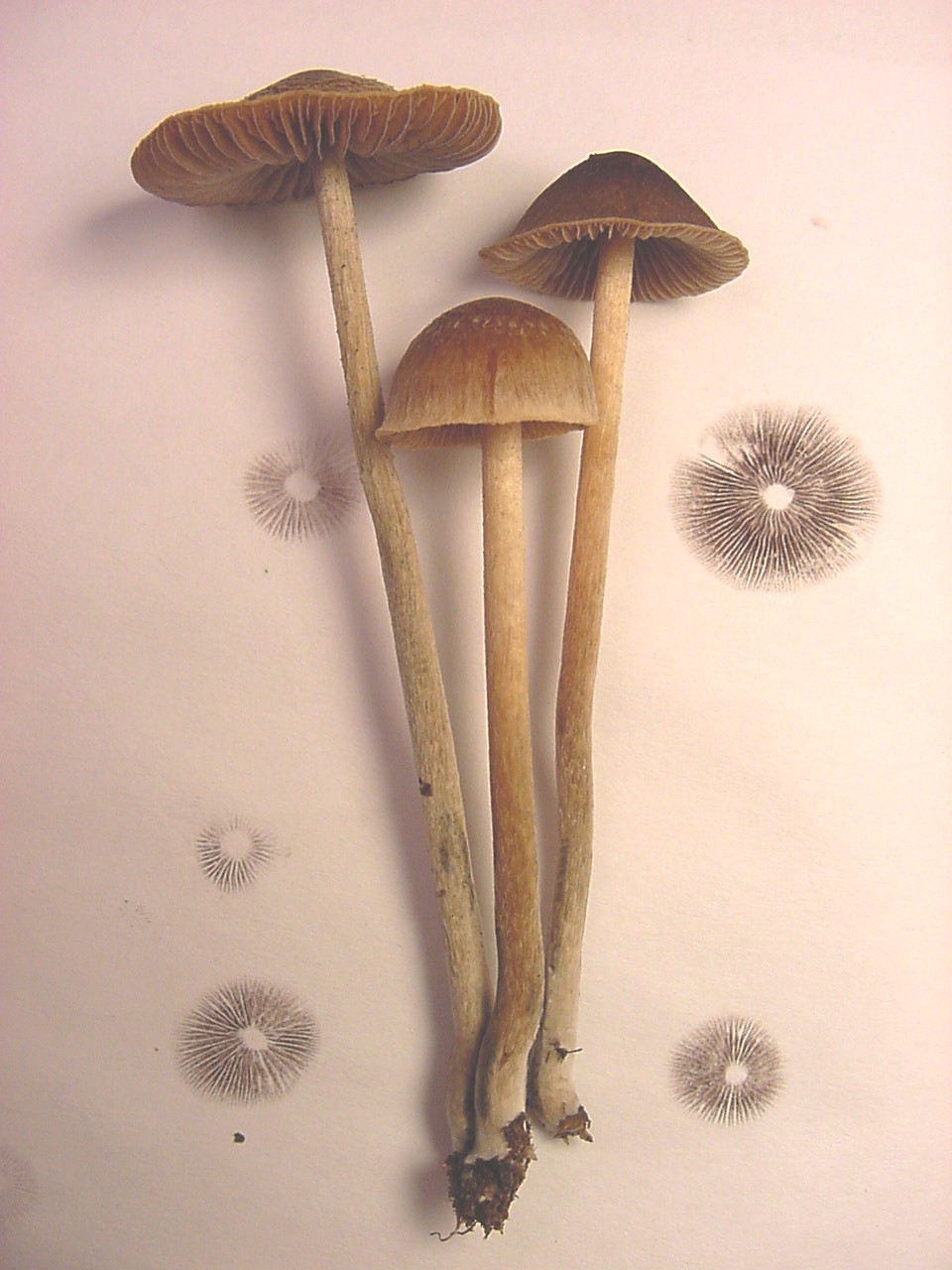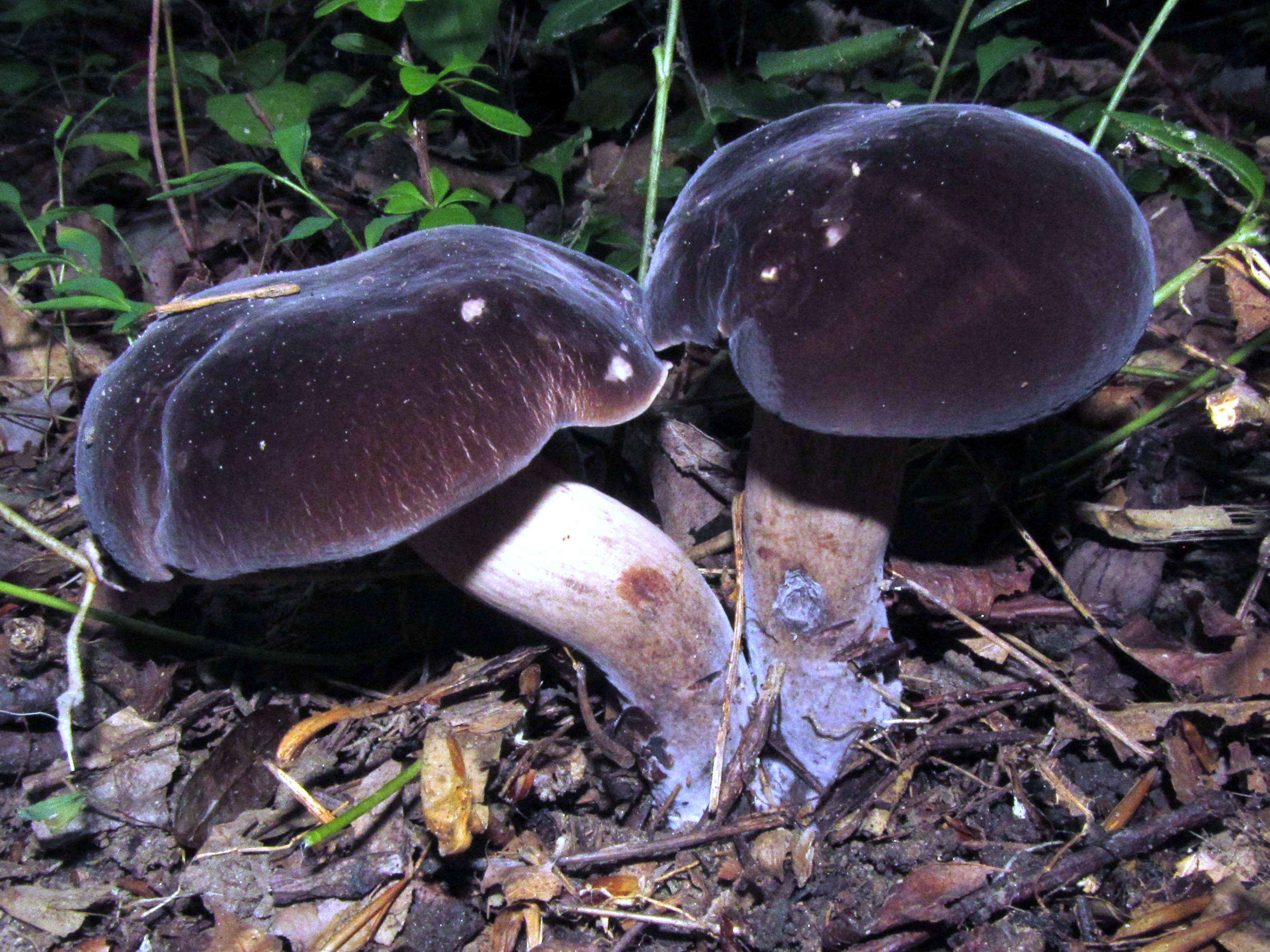|
Hallucinogenic Bolete Mushroom
Hallucinogenic bolete mushrooms, also known as psychoactive bolete mushrooms or as "xiao ren ren" mushrooms, are bolete mushrooms that produce hallucinogenic effects and are a type of hallucinogenic mushroom. They have been reported in Papua New Guinea, China, and the Philippines. The exact species of the mushrooms, their active constituents, and their mechanism of action have all yet to be fully clarified. However, among the most frequently implicated species is '' Lanmaoa asiatica''. Hallucinogenic bolete mushrooms are said to make people see the "xiao ren ren" or "little people" and hence to experience Lilliputian hallucinations. Lilliputian hallucinations are a unique type of hallucination and are not necessarily consistent with the hallucinogenic effects of other psychoactive mushrooms. Other much more well-known hallucinogenic mushrooms include psilocybin-containing mushrooms (which contain the serotonin 5-HT2A receptor agonist and serotonergic psychedelic psilocybin) an ... [...More Info...] [...Related Items...] OR: [Wikipedia] [Google] [Baidu] |
Boletus Speciosus Var
''Boletus'' is a genus of mushroom-producing fungi, comprising over 100 species. The genus ''Boletus'' was originally broadly defined and described by Carl Linnaeus in 1753, essentially containing all fungi with hymenial pores instead of gills. Since then, other genera have been defined gradually, such as ''Tylopilus'' by Petter Adolf Karsten in 1881, and old names such as ''Leccinum'' have been resurrected or redefined. Some mushrooms listed in older books as members of the genus have now been placed in separate genera. These include such as ''Boletus scaber'', now '' Leccinum scabrum'', ''Tylopilus felleus'', ''Chalciporus piperatus'' and ''Suillus luteus''. Most boletes have been found to be ectomycorrhizal fungi, which means that they form a mutualistic relationship with the roots system of certain kinds of plants. More recently, ''Boletus'' has been found to be massively polyphyletic, with only a small percentage of the over 300 species that have been assigned to ''Boletus'' ... [...More Info...] [...Related Items...] OR: [Wikipedia] [Google] [Baidu] |
Amanita Muscaria
''Amanita muscaria'', commonly known as the fly agaric or fly amanita, is a basidiomycete fungus of the genus ''Amanita''. It is a large white-lamella (mycology), gilled, white-spotted mushroom typically featuring a bright red cap covered with distinctive white warts. It is one of the most recognizable fungi in the world. ''A.muscaria'' exhibits complex genetic diversity that suggests it is a species complex rather than a single species. It is a widely distributed mushroom native to temperate and boreal forests of the Northern Hemisphere, now also naturalized in the Southern Hemisphere, forming symbiotic relationships with various trees and spreading invasively in some regions. Its name derives from its traditional use as an insecticide. It can cause poisoning, especially in children and those seeking its hallucinogenic effects, due to psychoactive compounds like muscimol and the ibotenic acid; however, fatal poisonings are extremely rare. Boiling it reduces toxicity by removi ... [...More Info...] [...Related Items...] OR: [Wikipedia] [Google] [Baidu] |
Albert Hofmann
Albert Hofmann (11 January 1906 – 29 April 2008) was a Swiss chemist known for being the first to synthesize, ingest, and learn of the psychedelic effects of lysergic acid diethylamide (LSD). Hofmann's team also isolated, named and synthesized the principal psychedelic mushroom compounds psilocybin and psilocin. He authored more than 100 scientific articles and numerous books, including ''LSD: Mein Sorgenkind'' (''LSD: My Problem Child''). In 2007, he shared first place with Tim Berners-Lee on a list of the 100 greatest living geniuses published by ''The Daily Telegraph'' newspaper. Early life and education Albert Hofmann was born in Baden, Switzerland, on 11 January 1906. He was the first of four children to factory toolmaker Adolf Hofmann and Elisabeth ( Schenk) and was baptized Protestant. When his father became ill, Hofmann obtained a position as a commercial apprentice in concurrence with his studies. Owing to his father's low income, Albert's godfather paid for his e ... [...More Info...] [...Related Items...] OR: [Wikipedia] [Google] [Baidu] |
Chemist
A chemist (from Greek ''chēm(ía)'' alchemy; replacing ''chymist'' from Medieval Latin ''alchemist'') is a graduated scientist trained in the study of chemistry, or an officially enrolled student in the field. Chemists study the composition of matter and its properties. Chemists carefully describe the properties they study in terms of quantities, with detail on the level of molecules and their component atoms. Chemists carefully measure substance proportions, chemical reaction rates, and other chemical properties. In Commonwealth English, pharmacists are often called chemists. Chemists use their knowledge to learn the composition and properties of unfamiliar substances, as well as to reproduce and synthesize large quantities of useful naturally occurring substances and create new artificial substances and useful processes. Chemists may specialize in any number of Chemistry#Subdisciplines, subdisciplines of chemistry. Materials science, Materials scientists and metallurgists sha ... [...More Info...] [...Related Items...] OR: [Wikipedia] [Google] [Baidu] |
German People
Germans (, ) are the natives or inhabitants of Germany, or sometimes more broadly any people who are of German descent or native speakers of the German language. The Basic Law for the Federal Republic of Germany, constitution of Germany, implemented in 1949 following the end of World War II, defines a German as a German nationality law, German citizen. During the 19th and much of the 20th century, discussions on German identity were dominated by concepts of a common language, culture, descent, and history.. "German identity developed through a long historical process that led, in the late 19th and early 20th centuries, to the definition of the German nation as both a community of descent (Volksgemeinschaft) and shared culture and experience. Today, the German language is the primary though not exclusive criterion of German identity." Today, the German language is widely seen as the primary, though not exclusive, criterion of German identity. Estimates on the total number of Germ ... [...More Info...] [...Related Items...] OR: [Wikipedia] [Google] [Baidu] |
Roger Heim
Roger Heim (February 12, 1900 – September 17, 1979) was a French botanist specialising in mycology and tropical phytopathology. He was known for his studies describing the anatomy of the mushroom hymenium, the systematics and phylogeny of higher fungi (especially the related genera ''Lactarius'' and '' Russula'', the Russulales and '' Secotium''), the mycology of tropical fungi such as '' Termitomyces'', as well as ethnomycological work on hallucinogenic fungi, like ''Psilocybe'' and '' Stropharia''. In his career, he published over 560 articles, scientific reviews, and major works in fields like botany, chemistry, education, forestry, horticulture, liberal arts, medicine and zoology.Batra, L.R. (1980). "Professor Roger Heim". ''Mycologia'' 72(6): 1063–1065. Career After his secondary education at the Chaptal high school, his father, who was a state railway engineer, pushed him to join the Central School of Arts and Manufactures ("''Centrale''"), one of the oldest and most p ... [...More Info...] [...Related Items...] OR: [Wikipedia] [Google] [Baidu] |
Marie Reay
Marie Olive Reay (1922 in Maitland, NSW – 2004 in Booragul, NSW) was an Australian anthropologist, known particularly for work in the New Guinea Highlands. Career Reay did undergraduate studies at the University of Sydney, taking anthropology after hearing A. P. Elkin debate the philosopher John Anderson. Reay went on to study under Elkin, who directed her to do fieldwork among fringe-dwelling Aboriginal people in north-western NSW. She did six-month stints of fieldwork at Walgett, Bourke, Moree, Coonabarabran and other communities. In 1953 she was awarded a research scholarship in S.F. Nadel's department at the Australian National University and later that year travelled to Minj in the highlands of Papua New Guinea. She performed fieldwork from 1953 to 1955 amongst the south Wahgi people and was hosted and supported primarily by the Kugika community at Kondambi village, principally by Luluia Wamdi (Luluia was a government-appointed village official). This fieldwork be ... [...More Info...] [...Related Items...] OR: [Wikipedia] [Google] [Baidu] |
Psilocybe
''Psilocybe'' ( ) is a genus of gilled mushrooms, growing worldwide, in the family Hymenogastraceae. Many species contain the Psychedelic drug, psychedelic compounds psilocybin and psilocin. Taxonomy Taxonomic history A 2002 study of the molecular phylogeny of the agarics indicated the genus ''Psilocybe'' as then defined was polyphyletic, falling into two distinct clades that are not directly related to each other. The blue-staining Hallucinogenic mushroom, hallucinogenic species constituted one clade and the non-bluing species the other. The previous Type (biology), type species of the genus, ''Psilocybe '' (now ''Deconica montana''), was in the non-bluing clade, but in 2010, the type species was changed to ''Psilocybe semilanceata, P. semilanceata'', a member of the bluing clade. A 2006 molecular phylogenetic study of the Agaricales by Matheny and colleagues, further demonstrated the separation of the bluing and non-bluing clades of ''Psilocybe'' in a larger, strongl ... [...More Info...] [...Related Items...] OR: [Wikipedia] [Google] [Baidu] |
Tylopilus Nigerrimus
''Tylopilus'' is a genus of over 100 species of mycorrhizal bolete fungi separated from ''Boletus''. Its best known member is the bitter bolete (''Tylopilus felleus''), the only species found in Europe. More species are found in North America, such as the edible species '' T. alboater''. Australia is another continent where many species are found. All members of the genus form mycorrhizal relationships with trees. Members of the genus are distinguished by their pinkish pore surfaces. Taxonomy The genus was first defined by Petter Adolf Karsten in 1881. The type species, ''Tylopilus felleus'', was originally described in 1788 as a species of ''Boletus'' by French mycologist Pierre Bulliard. ''Tylopilus'' means "bumpy or swollen pileus", from the Greek ''tylos'' "bump" and ''pilos'' "hat". Molecular analysis indicates the genus, like other large genera within the Boletales, is polyphyletic. A lineage of ''Tylopilus chromapes'' (now ''Harrya chromapes'' and related species) ... [...More Info...] [...Related Items...] OR: [Wikipedia] [Google] [Baidu] |
Boletus Manicus
''Boletus manicus'' is a species of fungus in the family Boletaceae of mushrooms. Found in the Wahgi valley Papua New Guinea Papua New Guinea, officially the Independent State of Papua New Guinea, is an island country in Oceania that comprises the eastern half of the island of New Guinea and offshore islands in Melanesia, a region of the southwestern Pacific Ocean n ..., it was first described by French mycologist Roger Heim in 1963. Heim singled out this mushroom largely because of its similar appearance to ''Rubroboletus satanas''. In the Wahgi language it is called ''gegwantsyi ngimbl''. The word ''ngimbl'' in the south Wahgi dialect means pain, which describes the intense bitterness of the mushroom. It has been reported that ''B. manicus'' may be a hallucinogenic mushroom. However, this topic is controversial, and available findings are mixed. ''B. manicus'' is known to contain trace amounts of three unidentified indole, indolic compounds. These were detected by Albert ... [...More Info...] [...Related Items...] OR: [Wikipedia] [Google] [Baidu] |
Shaman
Shamanism is a spiritual practice that involves a practitioner (shaman) interacting with the spirit world through altered states of consciousness, such as trance. The goal of this is usually to direct spirits or spiritual energies into the physical world for the purpose of healing, divination, or to aid human beings in some other way. Beliefs and practices categorized as shamanic have attracted the interest of scholars from a variety of disciplines, including anthropologists, archeologists, historians, religious studies scholars, philosophers, and psychologists. Hundreds of books and academic papers on the subject have been produced, with a peer-reviewed academic journal being devoted to the study of shamanism. Terminology Etymology The Modern English word ''shamanism'' derives from the Russian word , , which itself comes from the word from a Tungusic language – possibly from the southwestern dialect of the Evenki spoken by the Sym Evenki peoples, or from the ... [...More Info...] [...Related Items...] OR: [Wikipedia] [Google] [Baidu] |
Russule
''Russula'' is a very large genus composed of around 750 worldwide species of fungi. The genus was described by Christian Hendrik Persoon in 1796. The mushrooms are fairly large, and brightly colored – making them one of the most recognizable genera among mycologists and mushroom collectors. Their distinguishing characteristics include usually brightly coloured caps, a white to dark yellow spore print, brittle, attached gills, an absence of latex, and absence of partial veil or volva tissue on the stem. Microscopically, the genus is characterised by the amyloid ornamented spores and flesh (trama) composed of spherocysts. Members of the related genus ''Lactarius'' have similar characteristics but emit a milky latex when their gills are broken. The ectomycorrhizal mushrooms are typically common. Although some species are toxic, a number of others are edible. Taxonomy Christian Hendrik Persoon first circumscribed the genus ''Russula'' in his 1796 work ''Observationes Mycologicae ... [...More Info...] [...Related Items...] OR: [Wikipedia] [Google] [Baidu] |








